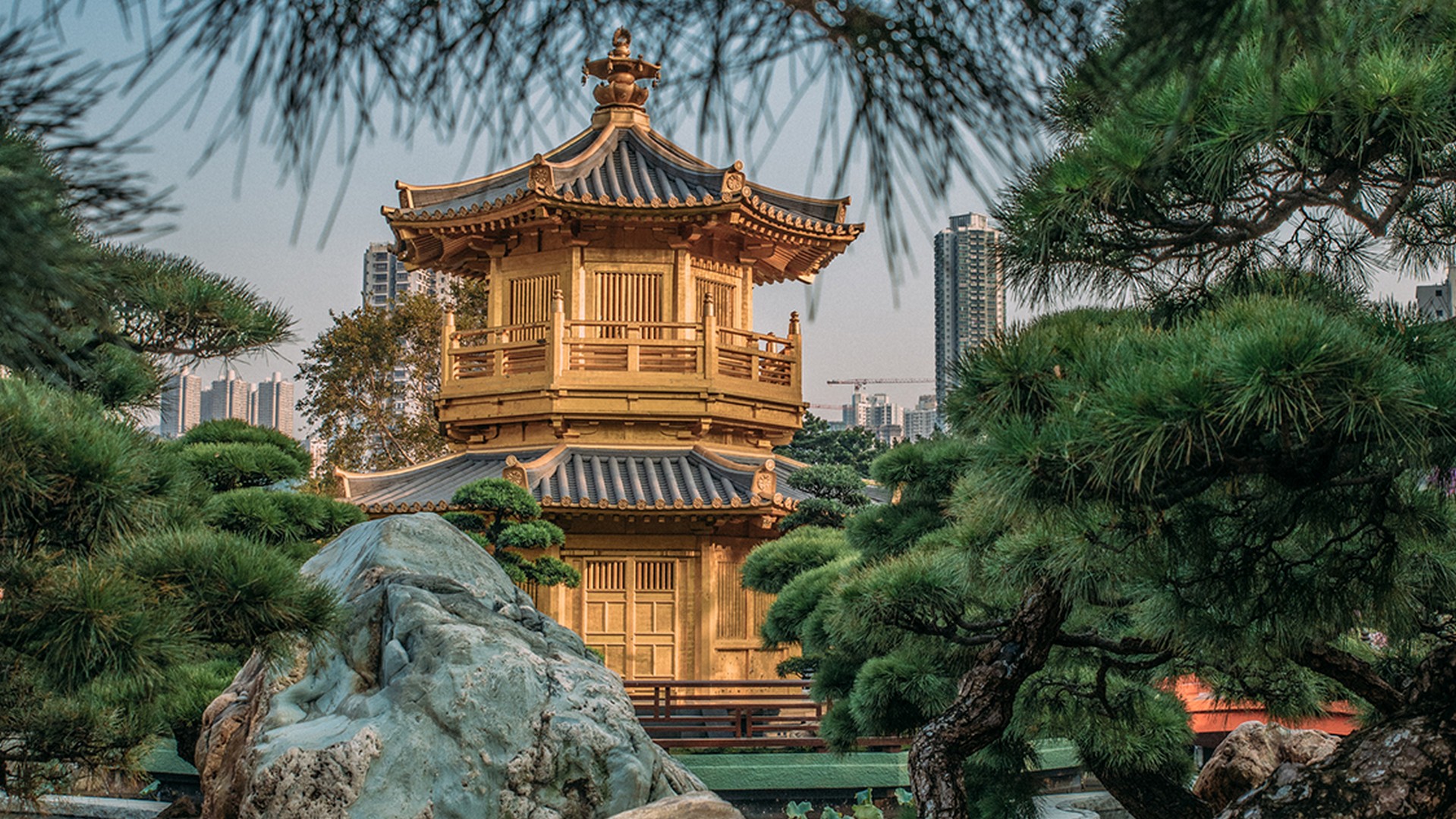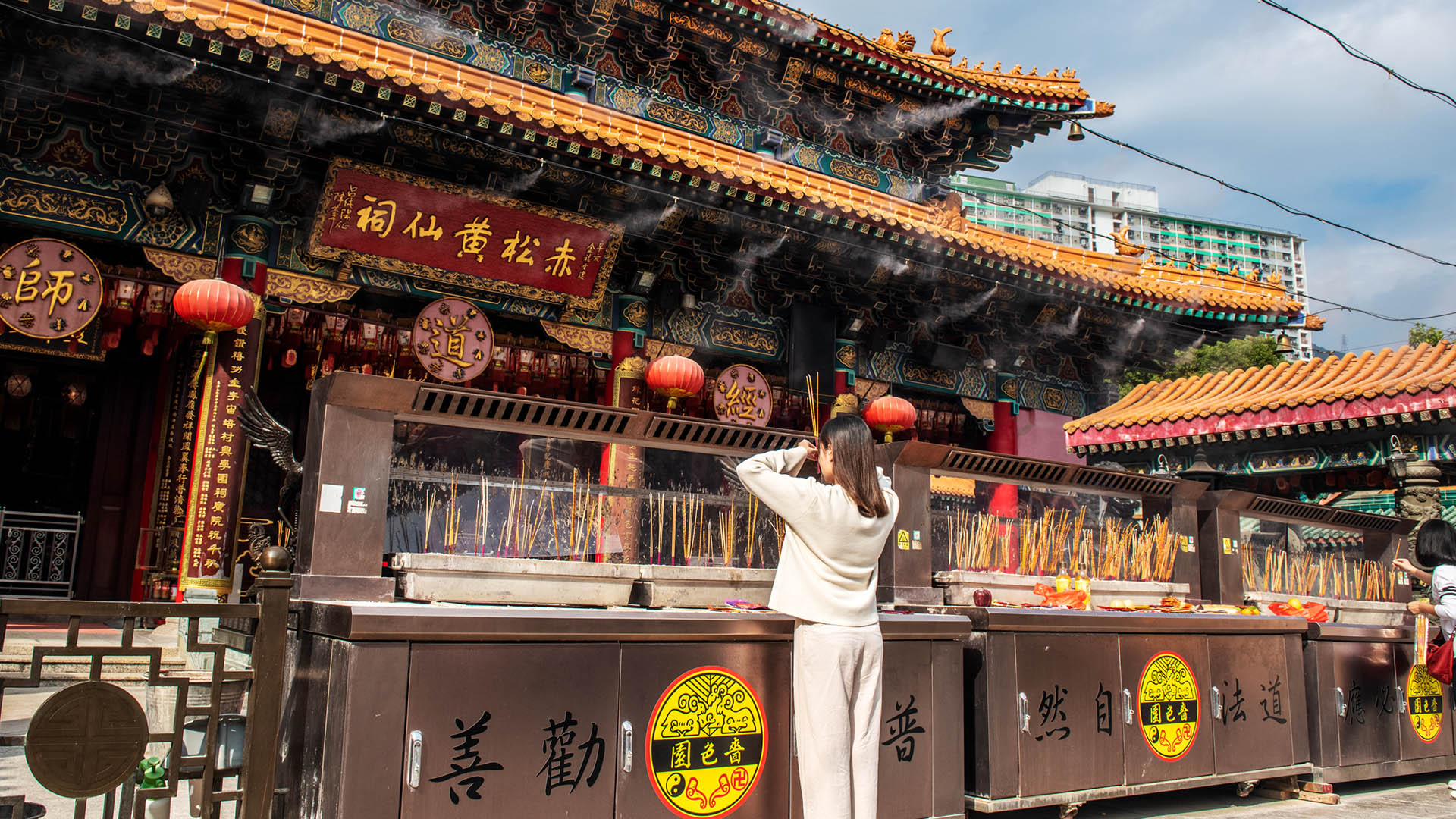If you’re seeking good fortune, religious guidance, a break from the busy city, or all three, then Wong Tai Sin District is the place to be. In one afternoon, you can experience the peace and tranquillity of Chi Lin Nunnery and Nan Lian Garden
{{title}} Address {{address}} Website {{website}} More info , and then immerse yourself in the colourful traditions of Sik Sik Yuen Wong Tai Sin Temple
{{title}} Address {{address}} Website {{website}} More info .

Hidden in plain sight amid Wong Tai Sin’s overhead highways and high-rise residential buildings, lies the nunnery and adjacent garden. The easiest way to explore these two destinations is to start with Nan Lian Garden. Located just a few minutes from MTR Diamond Hill Station, walking through its wooden gates transports you to an oasis of calm, with clever sound insulation keeping out the noise of nearby traffic.
Based on the Tang Dynasty (618-907 AD) Jiangshouju Garden in China’s Shanxi Province, Nan Lian Garden showcases traditional Chinese landscaping techniques and aesthetic principles, with winding paths taking you past lush greenery, ornamental rocks, koi-filled ponds and a rushing waterfall. Meanwhile, its classical timber structures are built without a single nail, including the striking red bridges leading to the garden’s centrepiece, the magnificent golden Pavilion of Absolute Perfection.
For Yip Ping-kin, a worker at Nan Lian Garden, it’s about more than just a moment of peace. “I see more than just rocks and trees; to me, each object is distilled from history and the culture of the ages. The garden is a platform to spread Chinese culture and history. It gives people from the busy city a chance to have a quiet moment,” she explains. “When you drink a Wu Yi tea inside Song Cha Xie [the garden’s teahouse], you’re also experiencing the peace that the traditional Chinese tea ceremony can give you — tasting the years of efforts that went into planting the tea, frying the tea leaves, and the long history behind Chinese tea.” The garden’s vegetarian restaurant is renowned and often books out during weekends.

Connected to Nan Lian Garden is Chi Lin Nunnery. Established in 1934, this former villa went through several stages of renovation in the 1990s, before finally opening to the public in 2000. More than just a place of worship for Buddhists, it is now home to a school, library, dentist and residences for the elderly.
“Being a nun in the modern day means helping other people,” Yip says. “In ancient times, it was all about studying books, learning the ways of Buddhism and its philosophy. Now you can see that they dedicate their mission to helping the needy, sick and old.”
The main areas open to the public are the Lotus Pond Garden and Hall of Celestial Kings, which houses a gigantic golden statue of Buddha guarded by four deities at each corner of the hall. The Lotus Pond Garden allows visitors to settle into the calmness before walking into the sacred hall where chants play in the background.

Meanwhile, a contrasting destination for culture, heritage and religion lies just one MTR station away. Embodying the religions of Taoism, Buddhism and Confucianism, Sik Sik Yuen Wong Tai Sin Temple is probably the busiest temple in Hong Kong, and has a reputation as the luckiest too. Dedicated to the god of healing Wong Tai Sin, this iconic temple is a feast for the senses, with bright red pillars, bronze zodiac statues, jade-coloured roofs with intricate latticework and dragon adornments, and the scent of incense thick in the air.

“I have been coming here to wish for good luck for at least a decade,” says 65-year-old Wong Mei-yu. “I follow the same routine every year — I buy nine incense sticks and a stack of wishing papers from one of the stores outside the temple, and then write my family members’ names onto the papers. First I present the incense sticks to Buddha and the gods, then burn the papers to wish for good luck and fortune.”
Visitors can also get their fortune told by shaking a bamboo stick out of a box onto the ground. The temple provides free bamboo for this, with each stick inscribed with a number and corresponding Chinese saying.
For help deciphering your fate, head to one of the fortune tellers in the adjacent Wong Tai Sin Fortune-Telling and Oblation Arcade — they will translate the reading, providing context to your life, for a small fee. Their doors are plastered with photographs of celebrity customers and signs indicating their language abilities. They can also tell your fortune from palm or face reading — ancient arts that Chinese people have relied on for generations to help navigate their future.
The Hong Kong Tourism Board disclaims any liability as to the quality or fitness for purpose of third party products and services; and makes no representation or warranty as to the accuracy, adequacy or reliability of any information contained herein.






 Live Chat
Live Chat









